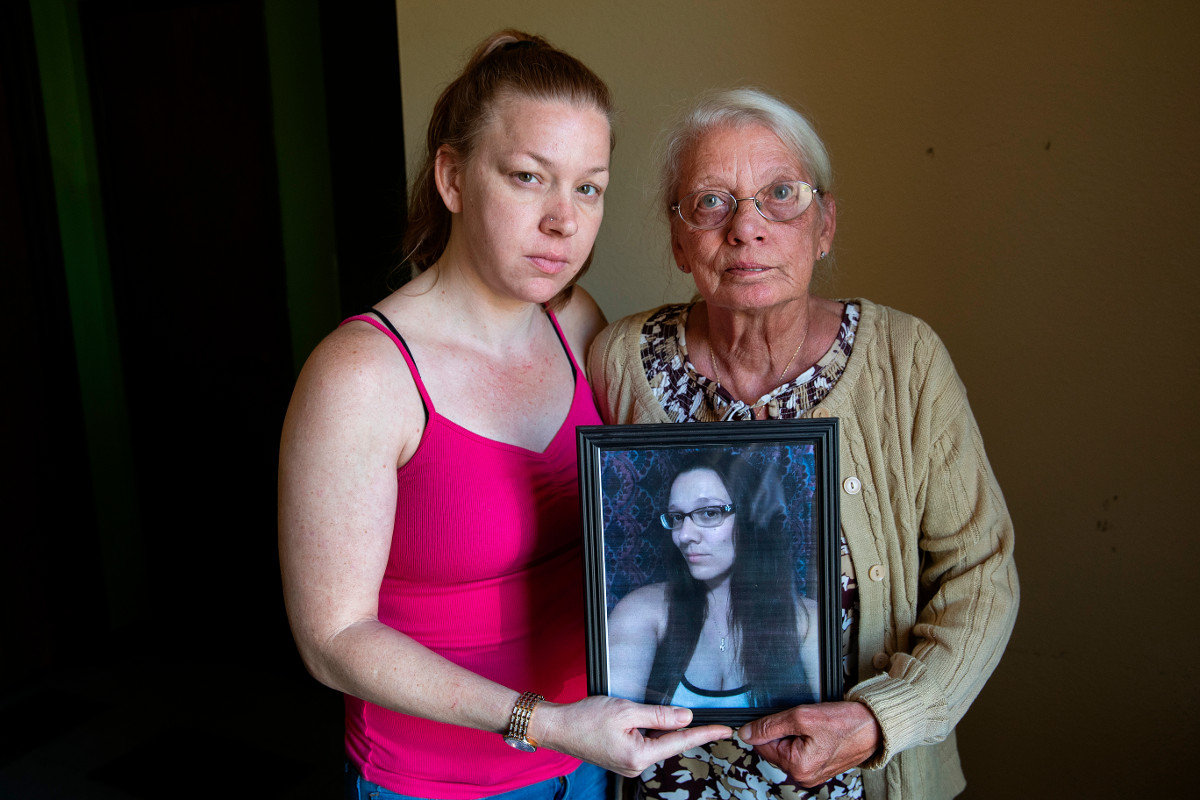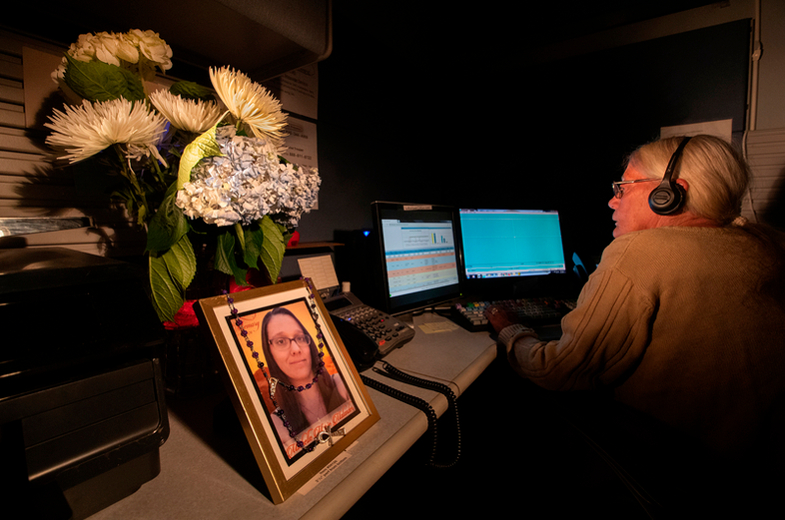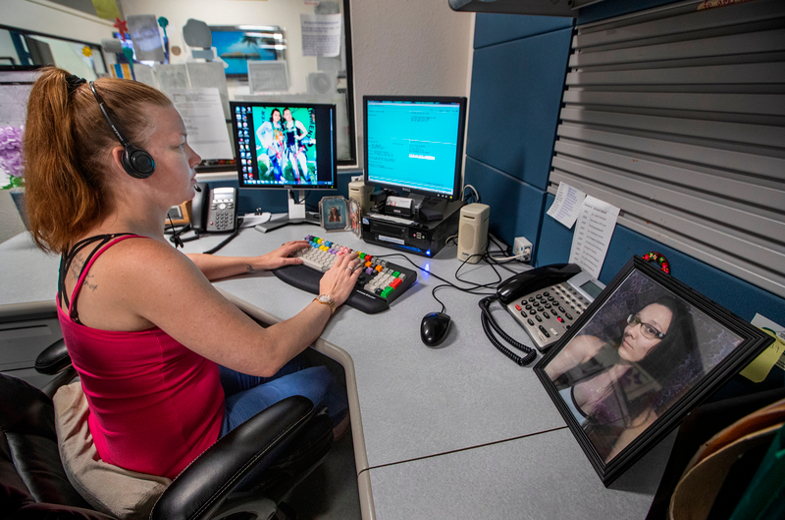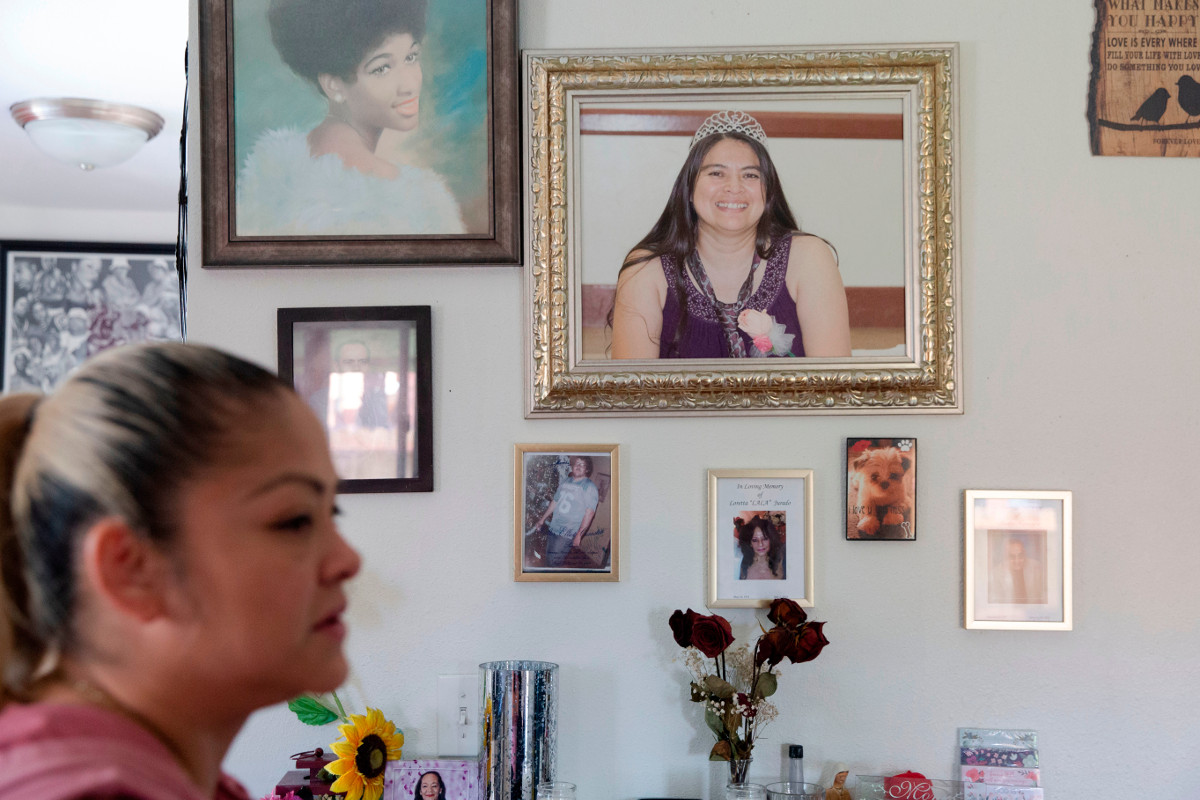When Michelle Malander was rushed to a Mission Hills hospital with a broken skull, her relatives already suspected who her attacker was.
For 14 years she’d been trapped in a cycle of abuse at the hands of her boyfriend, who once knocked out her front tooth. Another time he had cracked her wrist.
This time, Malander, 29, was beaten to death in the RV she shared with him in Pacoima. Her boyfriend, Hector Lopez, was later convicted of her murder.
“She lived every day in fear,” said her sister, Rachael Johnson.
Killings like that of Malander are on the rise, a trend that has surprised and troubled domestic violence experts.
Last year, 114 women were killed in Los Angeles County, the highest number since the beginning of the decade, according to a Times analysis of coroner and law enforcement records. Meanwhile, the death toll for men, who make up the vast majority of casualties, declined dramatically to 523 from 755 a decade earlier.
170 knew suspect
214 cleared cases
44 did not know suspect
The Times examined L.A. County coroner’s records of all homicides of women over the last three years — nearly 300 deaths.
Police have named a suspect in 3 out of 4 killings.
In the incidents in which a suspect was identified, a vast majority of the women knew their accused killers.
Nearly half of the accused were at some point in an intimate relationship with the victim — boyfriends, husbands or often exes.
 Brooke Jackson, 40, was stabbed multiple times in her bedroom by her husband, authorities said. Jackson, of Lynwood, was the founding principal of a South L.A. charter school.
Brooke Jackson, 40, was stabbed multiple times in her bedroom by her husband, authorities said. Jackson, of Lynwood, was the founding principal of a South L.A. charter school.
 Dina Enriquez, 24, was shot by her longtime partner after an argument. The couple’s children, 2 and 6 years old, were in her Adams-Normandie apartment when she died.
Dina Enriquez, 24, was shot by her longtime partner after an argument. The couple’s children, 2 and 6 years old, were in her Adams-Normandie apartment when she died.
 Cherry Liu, 50, was shot by her estranged husband, who was hiding near her driveway, authorities said. Liu was a community specialist who organized activities for seniors in Sierra Madre.
Cherry Liu, 50, was shot by her estranged husband, who was hiding near her driveway, authorities said. Liu was a community specialist who organized activities for seniors in Sierra Madre.
Women are less likely than men to be killed in a shooting, but more likely to be beaten, stabbed or strangled. Female homicide victims also tend to be older, with a median age of 35, compared with 31 years old for men.
Though killings of men are highly concentrated in low-income neighborhoods, female slayings are less so, demonstrating how domestic violence crosses boundaries of geography and income.
The demand from those in need has placed a strain on service providers. Nearly 5 million women live in L.A. County, which has only 2,000 emergency and transitional shelter beds, said Eve Sheedy, the executive director of the county’s Domestic Violence Council.
Rainbow Services, a nonprofit based in San Pedro, turned away 900 requests last year for shelter that it couldn’t accommodate. And Peace Over Violence, an organization that provides crisis intervention, education and violence prevention services, has added more staff because of a growing wait list. The Jenesse Center, which primarily serves South Los Angeles, saw a 400-person increase in demand for services in 2018 compared with the previous year.
“It’s very, very difficult to actually go into shelter if you need to,” Sheedy said.

Pinpointing why more women are being killed is difficult, experts said, with violence often resulting from a complex web of social, psychological and economic factors.
Women in abusive relationships may not recognize the danger they’re facing. They may be too frightened to take action or to leave their partner because of risks to their finances or children. Friends and family may be unaware of domestic violence services such as shelters, counselors and confidential hotlines.
“It happens in the shadows; it happens in the home,” said Patti Giggans, the executive director of Peace Over Violence. “And when we find out about it, we try to do something about it, but we have to do more prevention.”
More women are being killed in L.A. County
Last year’s toll was the highest since 2010.

Nationally, the number of women killed is also rising. In 2017, 1,948 women were killed by men, according to a report released Wednesday by the Washington-based Violence Policy Center, which researches gun violence. The number — which takes into account incidents involving a single victim and a single offender — has been steadily rising since 2014.
James Alan Fox, a criminologist at Northeastern University, released a study in March that also found an uptick in the rates of intimate partner violence involving a gun. Fox said it’s unclear whether the increase is temporary or a trend.


Police and experts say some homicides come after many warning signs but others do not.
In April 2016, neighbors heard screams coming from Yanet Palma-Perez’s home in Vermont Square.
The mother of three had thrown out her estranged husband, Hugo Cruz, 40, weeks before. Cruz had slept in a van nearby and sometimes washed up in the house
That morning, he returned and attacked Palma-Perez, 41, with a hatchet. She called 911, screaming for her life. Police arrived too late. Palma-Perez suffered 21 wounds to her head and died.
Cruz is serving 25 years to life for her murder. The children, who were at school when their mother was killed, are now being raised by her sister, Ena Palma.
“That day, they didn’t just lose their mom, but they lost a father figure,” Palma said. “They lost two people at the same time.”
Los Angeles Police Det. Connie Zych, who investigated Palma-Perez’s killing, said that Cruz had been controlling, but that there were no other signals of violence before the fatal assault.
“It’s just one of those domestic violence cases where he snapped,” Zych said.


Sometimes victims are embarrassed to admit abuse. When Claudia Gonzalez, 30, began dating Larry Sierra, she distanced herself from loved ones. When she became pregnant with her third child, she confided in a close friend that Sierra had held a knife to her stomach.
When she left him, he began threatening her.

On March 16, 2018, Gonzalez tried to visit her son, who lived with Sierra’s mother, but was rebuffed by Sierra at the home.
As she was sitting on a bus bench in Florence later that night, a man emerged from a van and shot her in the back. Her mother, Maria Gonzalez, told police to speak to Gonzalez’s ex-boyfriend.
Police say they linked the vehicle used in the shooting to Sierra, who has pleaded not guilty to murder and is awaiting trial in October.
“He was a person who didn’t take no for an answer,” said Angelica Cortez, a longtime friend.
When a partner leaves a relationship, many abusers feel a loss of power and control, said Charmine Davis, the director of behavioral health at the Jenesse Center.
“We see abusers who are very, very angry and very, very afraid,” she said.
Hoping to prevent such incidents, first responders have begun dedicating additional resources to handling domestic violence incidents.
The Los Angeles Police Department receives and investigates more than 15,500 reports of intimate partner violence annually, and expanded its use of domestic abuse response teams that include a specially trained officer and a domestic violence service provider. County mental health and case workers have partnered with the Sheriff’s Department and fire officials in a pilot program to provide resources to those who witness serious crimes.
On a national scale, the Violence Against Women Act, which was passed by Congress in 1994, provides vital funds for prosecuting violent crimes against women. The act is up for reauthorization this year and includes additional protections for college students, immigrants, Native American and LGBTQ victims.
But the bill’s prospects are uncertain due in part to some tighter gun restrictions. The act expands the definition of a domestic abuser to include current and former dating partners, and would prohibit those convicted of abuse from buying or owning guns, which is commonly referred to as the “boyfriend loophole.”

In some cases, tighter gun restrictions wouldn’t have saved a life. Malander was controlled by her boyfriend, who wouldn’t allow her to talk to friends and family, her sister said.
Lopez would buy her cards and flowers. He’d proclaim he’d never hit her again, and then the abuse would resume. Lopez is serving 16 years to life for her murder.
“It’s so sad and so brutal that at times, I think to myself, I feel selfish that I would still want her to be here suffering,” said Johnson, her sister. “That’s how bad it was.”
